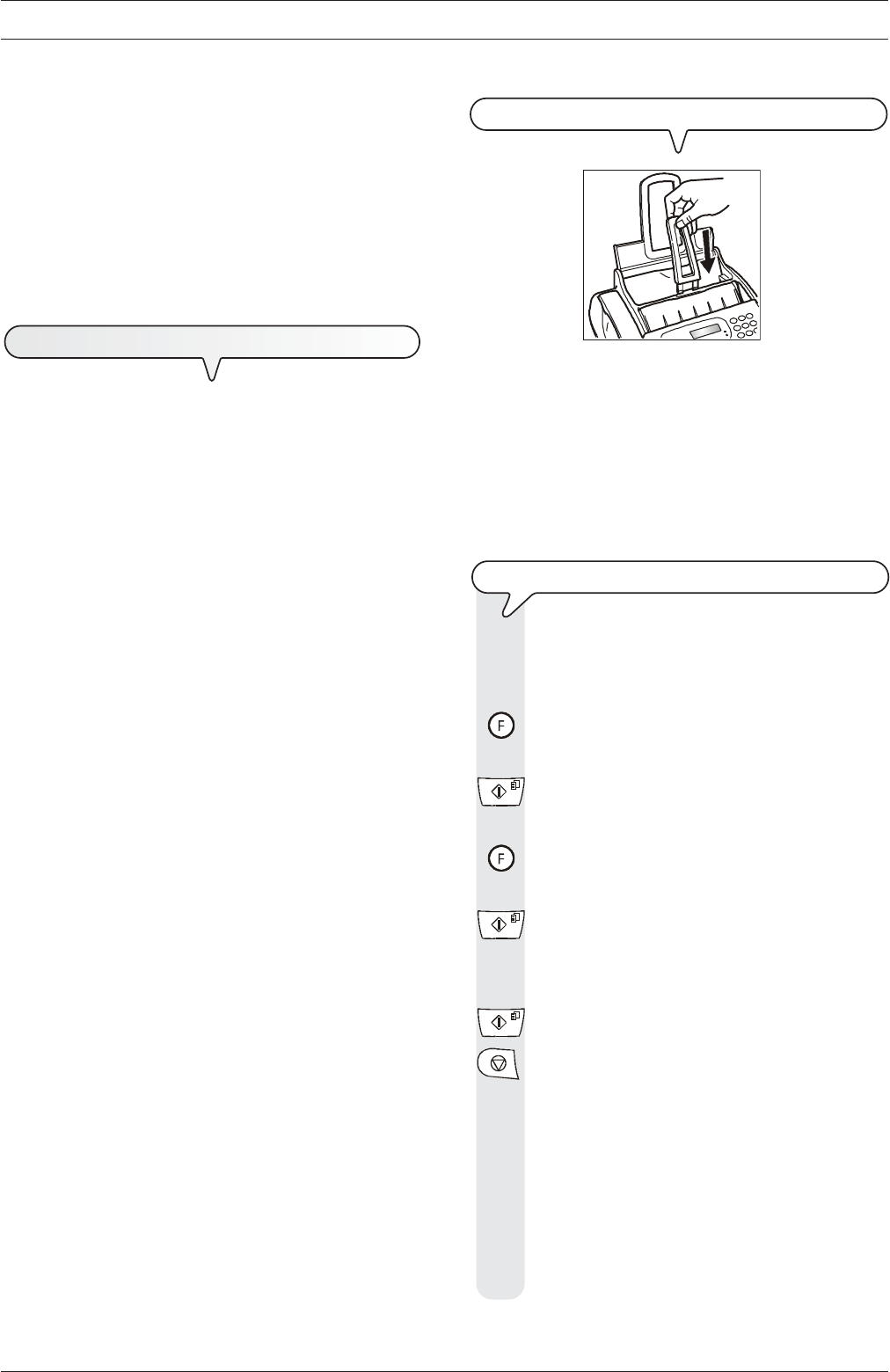
12
B
ASIC
TRANSMISSION
AND
RECEPTION
OPERATIONS
Now that your fax machine has a name and number, you can
use it to:
• send documents (also in broadcast mode, from the memory, or by
polling)
• receive documents (also by polling)
• make telephone calls (see the chapter "To make a call")
• copy documents (see chapter "To make a copy").
T
O
SEND
A
DOCUMENT
WHAT DOCUMENTS MAY BE USED
Dimensions
• Width min. 210 mm - max. 216 mm
• Length min. 148 mm - max. 600 mm
Thickness
from: 80 gr/m
2
(max. 20 sheets)
60 - 90 gr/m
2
(max. 10 sheets)
50 - 140 gr/m
2
(1 sheet at a time)
For documents of a different size from those specified, you
can use a transparency with a rear sheet as a document holder.
NEVER USE
• curled paper
• excessively thin paper
• torn paper
• damp or set paper
• excessively small paper
• crumpled paper
• carbon paper
In addition, in order to avoid damaging your fax machine and invali-
dating your guarantee, make sure that the documents you are to use
do not contain:
• staples
• paper clips
• adhesive tape
• correcting liquid or glue that has not yet dried.
For all these cases, photocopy the document and send the copy.
TO PLACE THE DOCUMENT IN THE ADF
1. Insert the automatic document feeder in the slot until it clicks into
position.
Insert the document,
without forcing
, in the ADF(automatic docu-
ment feeder) with the side to be sent facing upwards. The bottom
edge of the original is fed into the ADF and the display shows on
the top line:
DOCUMENT READY
and on the bottom line, the default contrast value: NORMAL.
TO ADJUST THE CONTRAST AND RESOLUTION
Before sending a document you can make some
adjust-
ments
so as to
optimize
the printing quality.
TO REGULATE THE CONTRAST
Until the display shows:
FAX SET-UP
The display shows:
DATE AND TIME
The display shows:
VARIOUS SETTINGS
Until the display shows:
CONTRAST: NORMAL
|
/
}
To view the other available options: "DARK" and "LIGHT".
To confirm your choice.
To return the fax machine to the initial stand-by mode.
The contrast should be regulated on the basis of the
following criteria:
•
NORMAL
, if the document
is neither too light nor too
dark
. "NORMAL" appears on the bottom line of the dis-
play.
•
LIGHT
, if the document is
dark
. "LIGHT" appears on the
bottom line of the display.
•
DARK
, if the document is
light
. "DARK" appears on the
bottom line of the display.


















